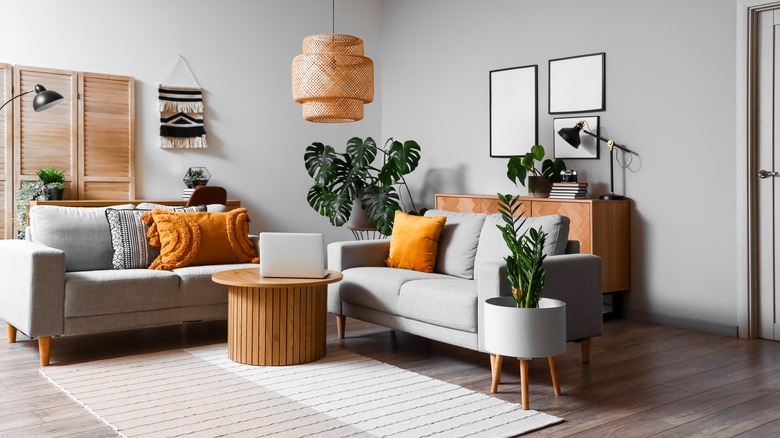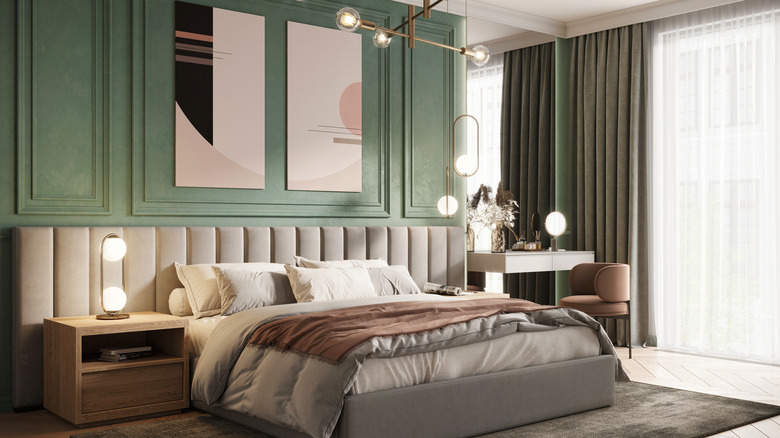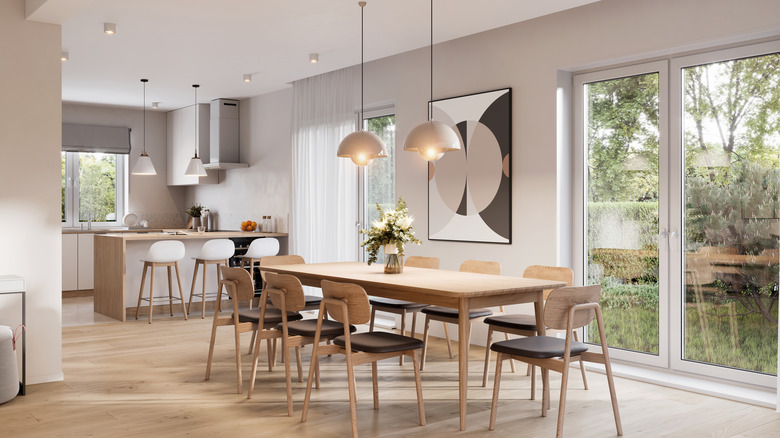The Designer Tip That Will Make Your Favorite Decor Really Pop In Your Home
You've been collecting interesting objects and unique décor pieces to display in your home, just as the designers suggested. You've coordinated colors, found interesting textures, and sprinkled them among the rest of your design. Still, something looks off, and you can't quite put your finger on it. There's one detail you may be missing that makes décor features stand out and pull the design together: balance. "Balance is the key for any composition, whether it be art, photography, or, in our case, interior design," interior designer Phoenix Grey explains on TikTok. He goes on to explain that one way to create balance is by utilizing negative space.
When it comes to negative space in interior design, it's quite simple. Negative space refers to areas left blank, in which there is no furniture or decor. "Negative space breaks up the narrative into chunks much like a paragraph," Grey continues. "These blank spaces let your eyes rest and refocus. Implementing these can really make the design elements pop to create a sense of harmony." By not overloading a room's design with multiple, possibly clashing elements, the overall design will look well-thought-out and cohesive.
Negative space is an essential component
Designers often talk about having their eyes bounce around the room. However, a room stuffed with tons of details will have the eyes bouncing around too much. While you want to create visual interest that makes the eyes dance, you don't want so much interest that you can't register individual features. This is where negative space comes in. The absence of a décor detail allows for a main feature to be at the forefront, whether that's a piece of artwork or a unique architectural component.
Negative space can also be functional, as it can direct the flow of traffic through a room or to other rooms in the house. Use your furniture placement not only to guide traffic through the space but also to feature statement pieces. The layout can draw attention to a colored sofa or vintage side chairs. Or you can place the furniture to feature other aspects of the room, such as a wall of windows or a fireplace.
How to do negative space right
Negative space isn't only about not placing an item in a room; in many cases, it's an intentional act. But to know how to do negative space the right way, it's important to start by learning the two different types. Active negative space is a conscious decision. It's choosing to place an object and not place anything around it to create a focal point. Passive negative space, on the other hand, is usually unnoticed. These subtle spaces are still intentional, such as the spacing between a painting and the mantle of the fireplace it hangs above.
If you don't know where to start on creating negative space, Phoenix Grey suggests, "Find a point in your room that you are drawn to immediately and remove the excess items around it, making the design style more impactful." He recommends, "Taking a picture of your space in high contrast black and white is another great alternative to see the space of what really creates kind of a glob effect of what is busy and what is negative, and what needs to be removed around it to really highlight those pieces" (via TikTok).


